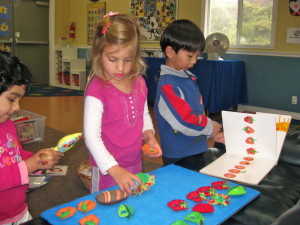Critical Thinking Skills You Should Be Teaching Your Child
“Too often we give children answers to remember rather than problems to solve.”
– Roger Lewin
What is Critical Thinking?
Critical Thinking has been a hot topic in education since 1948 when Benjamin Bloom took the lead in developing “the goals of the educational process,” including knowledge, comprehension, application, analysis, synthesis and evaluation.
The definition of critical thinking has changed somewhat over the past decade and will probably continue to change, but one thing will remain constant – the need to provide effective solutions to complex problems.
 Why should children be able to think critically?
Why should children be able to think critically?
Having the ability to think is an essential skill. Critical Thinking helps students to solve problems by looking at an issue from several standpoints before finally reaching a decision. Regardless of how the information is presented (whether from books, media, friends, parents and/or strangers), students can draw their own conclusions based on their own beliefs, not beliefs of others. With strong Critical Thinking skills, children will be less than likely to succumb to peer pressure.
“Give a man a fish and you feed him for a day; teach a man to fish and you feed him for a lifetime.”
– Proverb
What Critical Thinking skills should you teach your child now?
Critical Thinking skills are essential in order for children (and adults) to be able to problem solve. Teach children to seek out answers instead of just accepting what has been told to them as facts. Read aloud a story to your child and ask Critical Thinking questions.
- Knowledge
- Describe the: who, what, when, where, why and how of the story.
- Comprehension
- Retell the story in the child’s own words.
- What happened in the story?
- Application
- Before reading the story, ask the child to predict what they think will happen in the story?
- Ask them why they made their predictions?
- Which clues are they using to come up with their predictions?
- Analysis
- What are the differences between this story and another one that they have read?
- What are the similarities between the two stories?
- Synthesis
- How would you tell the story from the another character’s point of view?
- What would happen if you changed one of the characters? Why?
- Evaluation
- How else could the story have ended?
- Was the story believable? Why or why not?
- Do you think there might be another version of the story?
______________________________________________________________

 ” Kristin Rude is the Owner and Center Director of FasTracKids, Del Mar, established in 2007. She started teaching Kindergarten in 1992. Kristin last taught in the Del Mar Union School District. She obtained her teaching credential from the University of San Diego and has her Masters degree in curriculum and instruction with an emphasis on second language learners. When Kristin is not working, motherhood keeps her plenty busy with her 2 children, Connor, age 5 & Katherine, age 4. It has been a truly rewarding experience watching her own children benefit from the FasTracKids program. Spending time with her family, golfing, traveling, and continuously learning are among her favorite activities.”
” Kristin Rude is the Owner and Center Director of FasTracKids, Del Mar, established in 2007. She started teaching Kindergarten in 1992. Kristin last taught in the Del Mar Union School District. She obtained her teaching credential from the University of San Diego and has her Masters degree in curriculum and instruction with an emphasis on second language learners. When Kristin is not working, motherhood keeps her plenty busy with her 2 children, Connor, age 5 & Katherine, age 4. It has been a truly rewarding experience watching her own children benefit from the FasTracKids program. Spending time with her family, golfing, traveling, and continuously learning are among her favorite activities.”










You must be logged in to post a comment Login